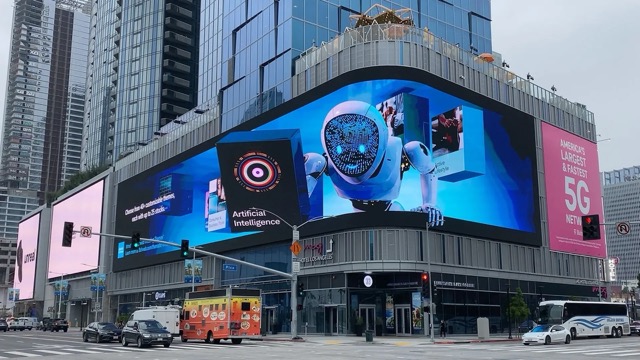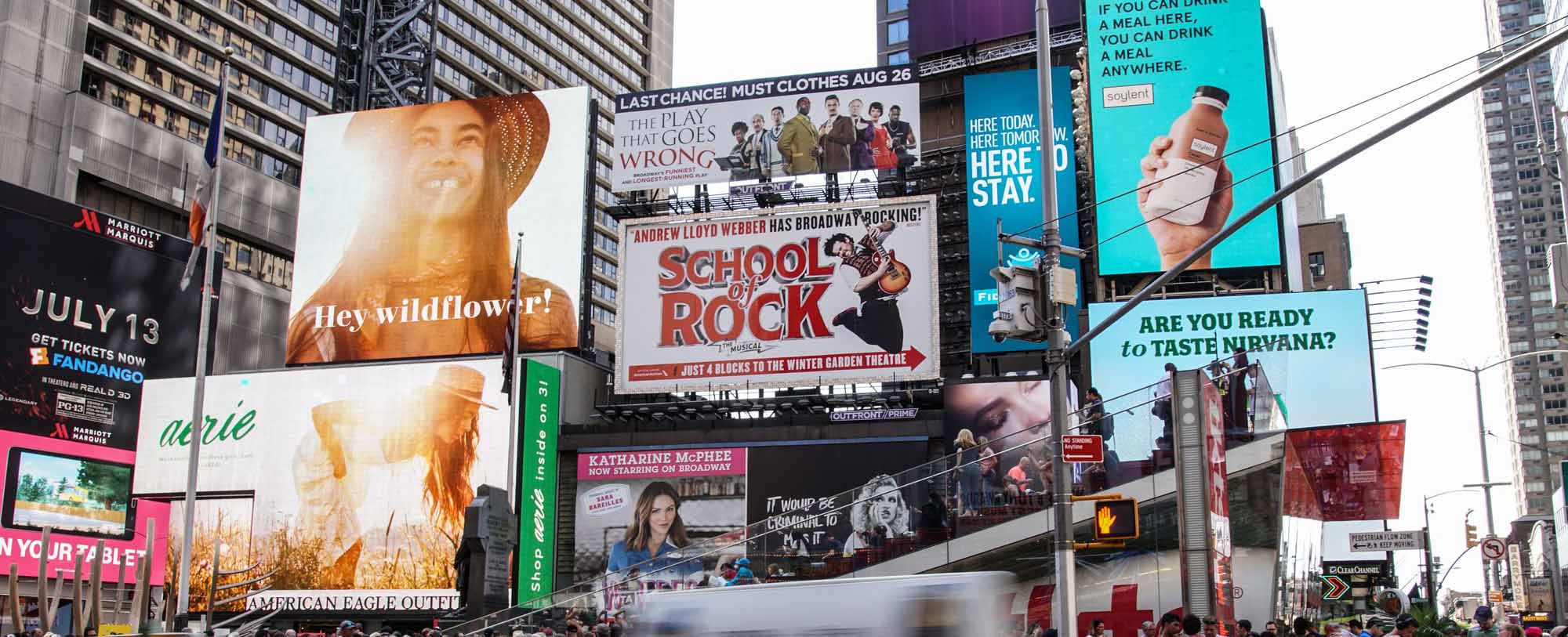
The Future of Programmatic Advertising Beyond the Screen
The world of advertising is evolving beyond pixels and placements.
Once confined to web banners and mobile apps, programmatic advertising - powered by AI and automation - is now redefining how brands communicate in the physical world.
From digital billboards on highways to IoT-enabled retail displays, the boundary between digital and real-world media is dissolving.
This evolution represents the next frontier in adtech - one that Adcentra.ai is actively building toward - where every surface, screen, and connected device becomes a potential channel for intelligent storytelling.
🧭 Introduction: From Clicks to Context
Programmatic advertising began as a revolution in digital media buying. Platforms like Google Ads, Meta, and Connected TV (CTV) transformed how advertisers reached users - replacing manual ad placements with real-time bidding (RTB) and AI-driven targeting.
What Made Programmatic Powerful:
- Automation: Instant buying and selling of ad inventory.
- Precision: Data-driven audience targeting across devices.
- Scale: Access to millions of impressions per second.
- Optimization: Continuous learning through AI feedback loops.
However, as consumers spend more time outside screens - in transit, at retail stores, or in smart environments - the challenge has shifted:
How do we bring the intelligence of digital advertising into the physical world?
🌍 Section 1: The Expansion into Physical Spaces
The new phase of programmatic isn’t limited to web or mobile - it’s spreading across outdoor, transport, retail, and entertainment ecosystems.
This shift is driven by the rise of Digital Out-of-Home (DOOH) media and connected IoT devices that can host, trigger, or track advertising in real time.
Key Physical Channels in the Programmatic Era:
- Outdoor Screens (DOOH):
High-footfall displays in malls, airports, and highways that sync live with campaign data. - Transit Media:
Ads on EV chargers, cabs, metro panels, and airports that target people in motion. - Retail & Point-of-Sale Displays:
Smart shelves and checkout screens showing dynamic offers based on shopper behavior. - Cinemas & Events:
Connected projectors or LED backdrops integrated with digital bidding systems.
In short, the city itself is becoming an ad network, powered by data and context.
🤖 Section 2: The Role of AI in Omnichannel Targeting and Attribution
As ad environments diversify, AI has become the unifying force enabling consistent, measurable performance across channels.
🔍 How AI Powers Omnichannel Advertising:
- Audience Intelligence:
AI combines behavioral, mobility, and demographic data to create dynamic audience clusters. - Cross-Device Identity Graphs:
Users can be targeted seamlessly across mobile, CTV, and DOOH - with unified profiles. - Attribution Modeling:
AI tracks how offline impressions (e.g., billboard views) contribute to online conversions. - Predictive Bidding:
Algorithms optimize bids across formats to achieve maximum reach per dollar spent.
This allows marketers to plan connected journeys - where a person sees an outdoor ad, engages on mobile, and converts online, all tracked intelligently.
Example:
A fintech brand runs DOOH ads near business parks, retargets nearby viewers on Instagram, and measures app installs - creating a closed-loop marketing cycle.
🌐 Section 3: Beyond the Screen - IoT, AR, and Smart Environments
“Beyond the screen” doesn’t just mean more screens - it means interconnected experiences that merge physical presence with digital intelligence.
🔌 The Internet of Things (IoT)
IoT-enabled devices like EV charging stations, smart kiosks, and public Wi-Fi touchpoints can now serve as addressable media surfaces.
These systems track environmental cues (e.g., location, weather, dwell time) to deliver contextually relevant ads.
Example:
A coffee chain ad plays on a digital display only when the nearby temperature drops below 20°C.
🕶 Augmented Reality (AR)
AR bridges virtual engagement with real-world context - allowing passersby to interact with ads via smartphones or glasses.
Brands can integrate QR or NFC triggers into DOOH creatives, blending digital storytelling with tangible interaction.
🏙 Smart Cities & Connected Infrastructure
With governments investing in smart infrastructure, cities are becoming data ecosystems.
Streetlights, bus shelters, and digital kiosks will soon connect to ad networks capable of automated programmatic delivery, powered by sensors and AI analytics.
These environments create ambient advertising - messages that respond dynamically to context, audience, and surroundings.
🔗 Section 4: Future Integrations - DOOH + CTV + Mobility Data
The future of programmatic is convergent - a seamless integration between digital and physical channels.
| Integration Layer | Example Use Case |
|---|---|
| DOOH + CTV | A car brand synchronizes its DOOH video on highways with the same creative on OTT platforms. |
| DOOH + Mobility Data | A travel company targets airport screens when flight data indicates peak departures. |
| DOOH + Social Retargeting | Viewers exposed to an outdoor ad are retargeted with mobile video ads within 2 hours. |
| DOOH + Voice/Audio | Programmatic audio ads in ride-hailing apps sync with in-transit digital screens. |
These integrations create multi-sensory, data-synced brand ecosystems, where campaigns operate fluidly across the digital–physical divide.
🚘 Mobility and Real-Time Signals
Mobility data plays a key role here - tracking commuter density, traffic flow, and travel habits to dynamically trigger ad placements in relevant zones.
Imagine an ad network that activates different creatives depending on whether people are walking, driving, or waiting - this is no longer hypothetical.
🚀 Section 5: Adcentra.ai’s Vision - Bridging Digital and Physical Adtech
At Adcentra.ai, we believe that the future of programmatic is hybrid - where data, context, and automation converge to make every ad more intelligent and measurable.
🔹 How Adcentra.ai Is Leading This Transition:
- 🧠 AI Planning Engine: Predictive modeling to select high-impact screens across cities.
- ⚙️ Programmatic DOOH Infrastructure: Enables real-time bidding and instant booking for outdoor inventory.
- 🌐 Cross-Channel Integration: Connects DOOH with digital ecosystems for seamless attribution.
- 📊 Performance Analytics: Real-time dashboards offering proof-of-play and engagement tracking.
- 💡 Contextual Triggers: Time, weather, and mobility signals to adapt ad delivery dynamically.
By merging AI, automation, and programmatic pipelines, Adcentra.ai transforms outdoor spaces into living, data-driven advertising environments.
Whether it’s a roadside billboard, mall screen, or smart kiosk - every surface becomes an intelligent, monetizable asset.

🧩 Section 6: The Coming Decade of Real-World Automation
The next 10 years will see programmatic advertising evolve into ambient intelligence - a blend of creativity, computation, and connectivity.
🔮 Key Predictions for 2030:
- Universal Programmatic Frameworks:
A single buying platform for DOOH, CTV, and mobile ads. - AI-Curated Creatives:
Ads generated in real-time based on environmental and audience cues. - Sustainable Advertising Networks:
Solar-powered DOOH units and energy-efficient AI scheduling. - Full-Funnel Attribution:
Linking outdoor exposure directly to online actions through cross-device IDs. - Privacy-First Data Models:
Federated AI ensuring personalization without compromising user privacy.
As the world grows increasingly connected, advertising will no longer interrupt experiences - it will integrate with them.
🏁 Conclusion
Programmatic advertising is no longer just an online phenomenon - it’s becoming the operating system of the physical world.
From smart billboards to connected mobility screens, every interaction can now be automated, optimized, and analyzed in real time.
By bridging the gap between digital precision and real-world presence, platforms like Adcentra.ai are paving the way for the next generation of contextual, AI-driven advertising.
The future isn’t just digital - it’s physical, intelligent, and everywhere.
💬 FAQs
1️⃣ What does “beyond the screen” mean in programmatic advertising?
It refers to extending programmatic automation from online media to real-world environments - such as DOOH, IoT, AR, and connected city infrastructure.
2️⃣ How does AI improve physical advertising?
AI enables predictive targeting, contextual triggers, and real-time optimization - ensuring ads reach the right audience at the right time, even in offline environments.
3️⃣ How is Adcentra.ai contributing to this evolution?
Adcentra.ai provides an AI-driven programmatic platform that unites digital and physical ad spaces, offering automation, analytics, and seamless cross-channel attribution.
Published by AdCentra.ai - Building the future of intelligent outdoor advertising in India.
